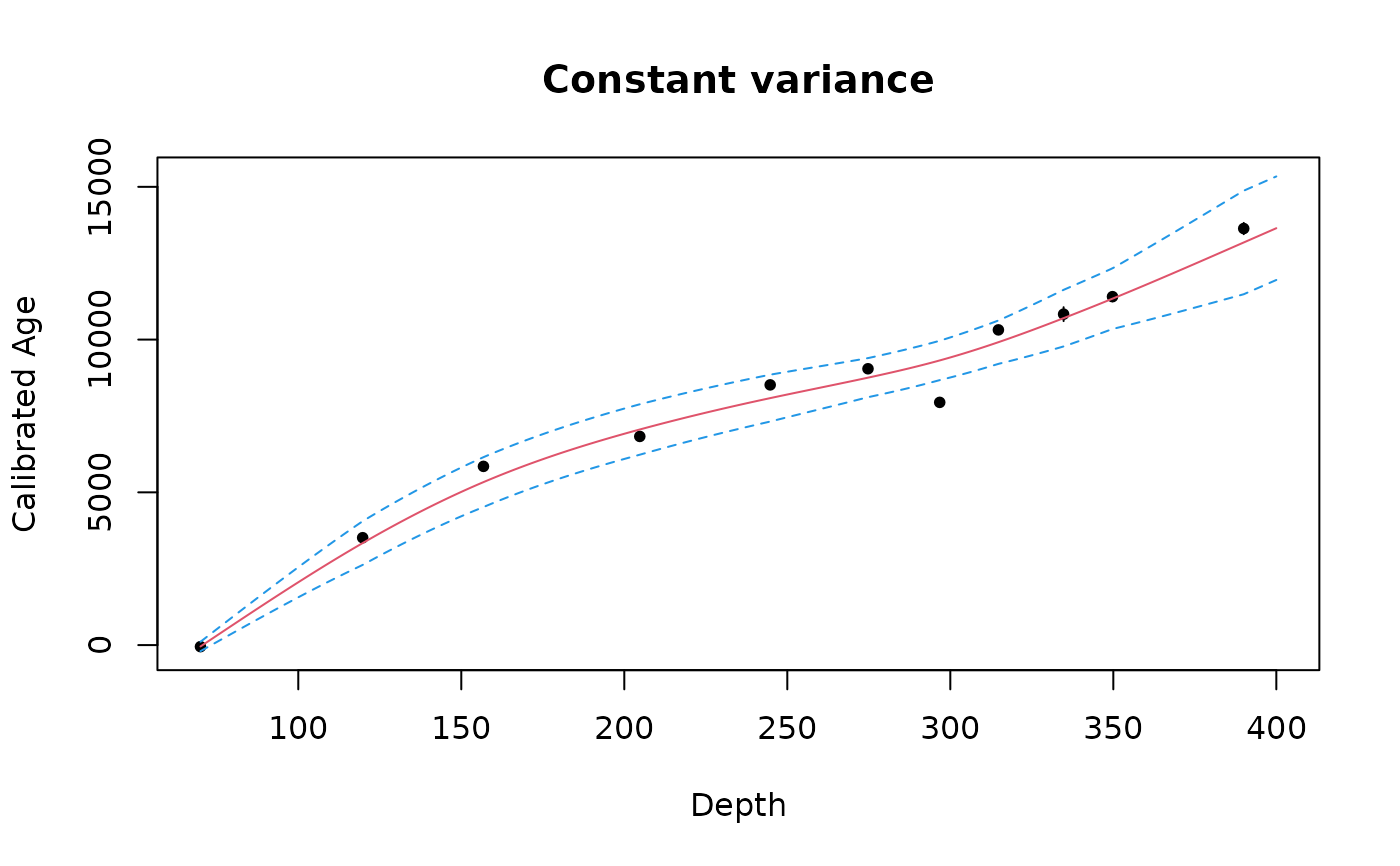Estimates the relationship of Calibrated age and depth for palaeorecords. The function uses a smooth spline from the mgcv library by Simon Wood. It produces predicted confidence interval for the relationship approximating a mixed effect model, as there are two levels of uncertainty, i.e. within dated object and between dated objects.
Arguments
- depup
The upper depths of the dated slides
- depdo
The lower depths of the dated slides
- bpup
The younger calibrated ages of the dated slides
- bpdo
The older calibrated ages of the dated slides
- use
Logical vector of dates to include in the model. Default is to use all.
- weights
Weights to be used for the estimation, default is fixed top-layer followed by inverse variance of within dated object
- vspan
The span to be used for the diagnostic plots, default span = 1
- k
Number of base function to start the shrinkage in the gam estimation procedure
- m
The order of penalty for the term, i.e. the degree of continuity at the knots (default, m = 2 gives cubic smooth spline)
- diagnostic
Logical, should diagnostic plots be made.
Value
A list of class 'agelme' with the following items:
- tdf
Degrees of freedom used by the cubic smooth spline, a vector with first value for constant variance and second vector for variance equal to mu.
- weights
A vector of the weights used by the cubic smooth spline
- Constant
A matrix with the numerical results for the dated points using a constant variance
- Muvar
A matrix with the numerical results for the dated points using variance equal to mu
- RES
A vector of the Residual sum of squares
- Models
A list with the models from the cubic smooth spline, constant and mu variance, respectively
- Data
A data.frame including the data used for the estimation
Details
Note that the fixation of the top layer is done by a weight = 1, whereas the other weights follows inverse variance within object.
The diagnostic plots is used to check the quality of the estimation and to see if there is a need for an assumption of between object variance proportional to mean. The latter however is rarely encountered for palaeodata.
References
Heegaard, E., Birks, HJB. & Telford, RJ. 2005. Relationships between calibrated ages and depth in stratigraphical sequences: an estimation procedure by mixed-effect regression. The Holocene 15: 612-618 doi:10.1191/0959683605hl836rr
